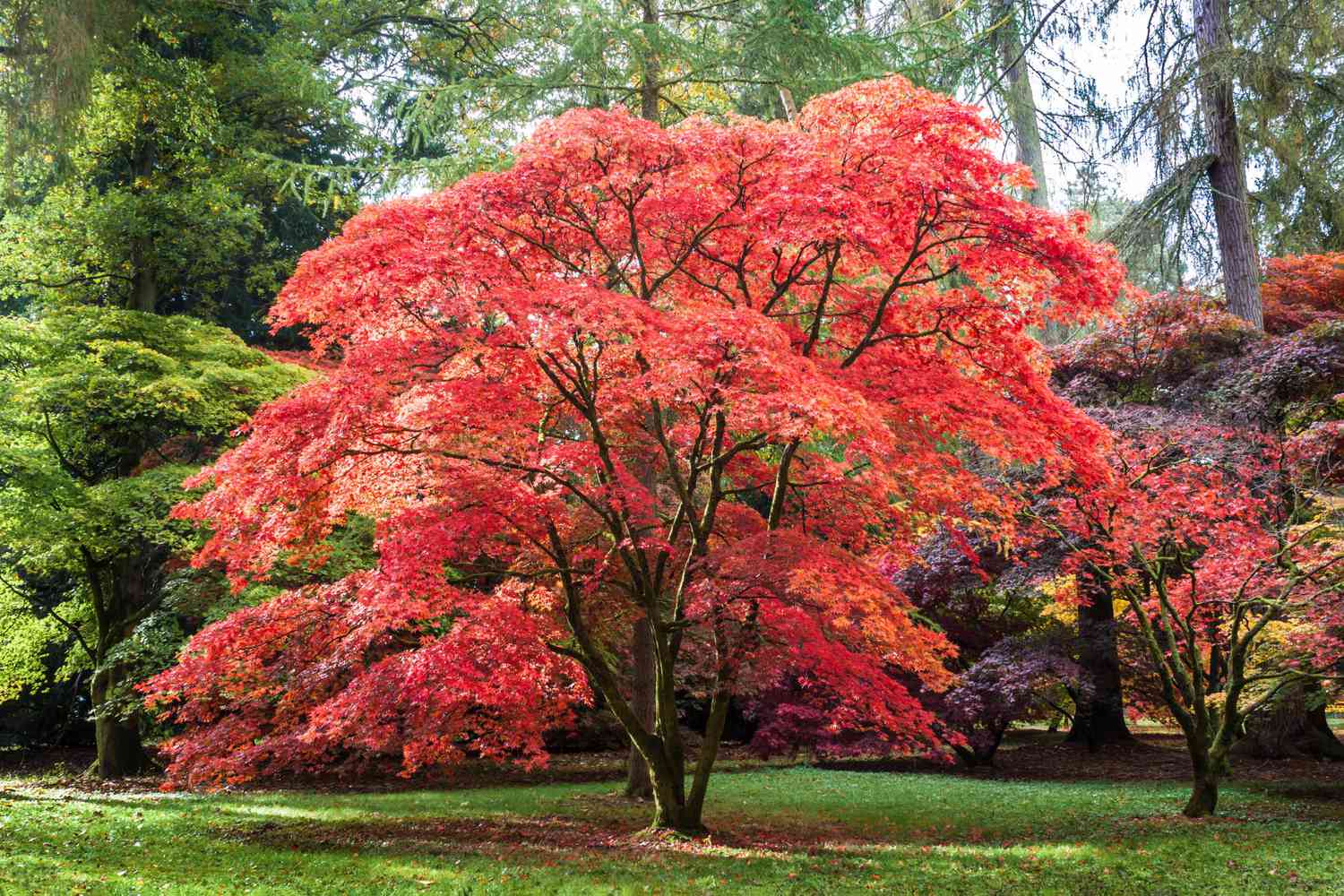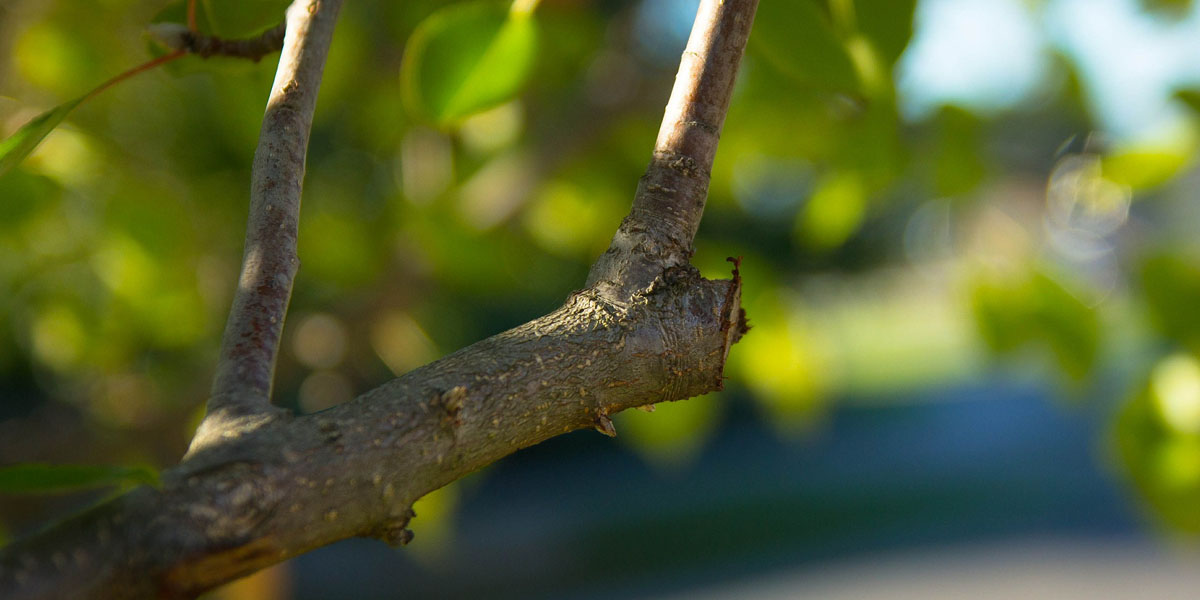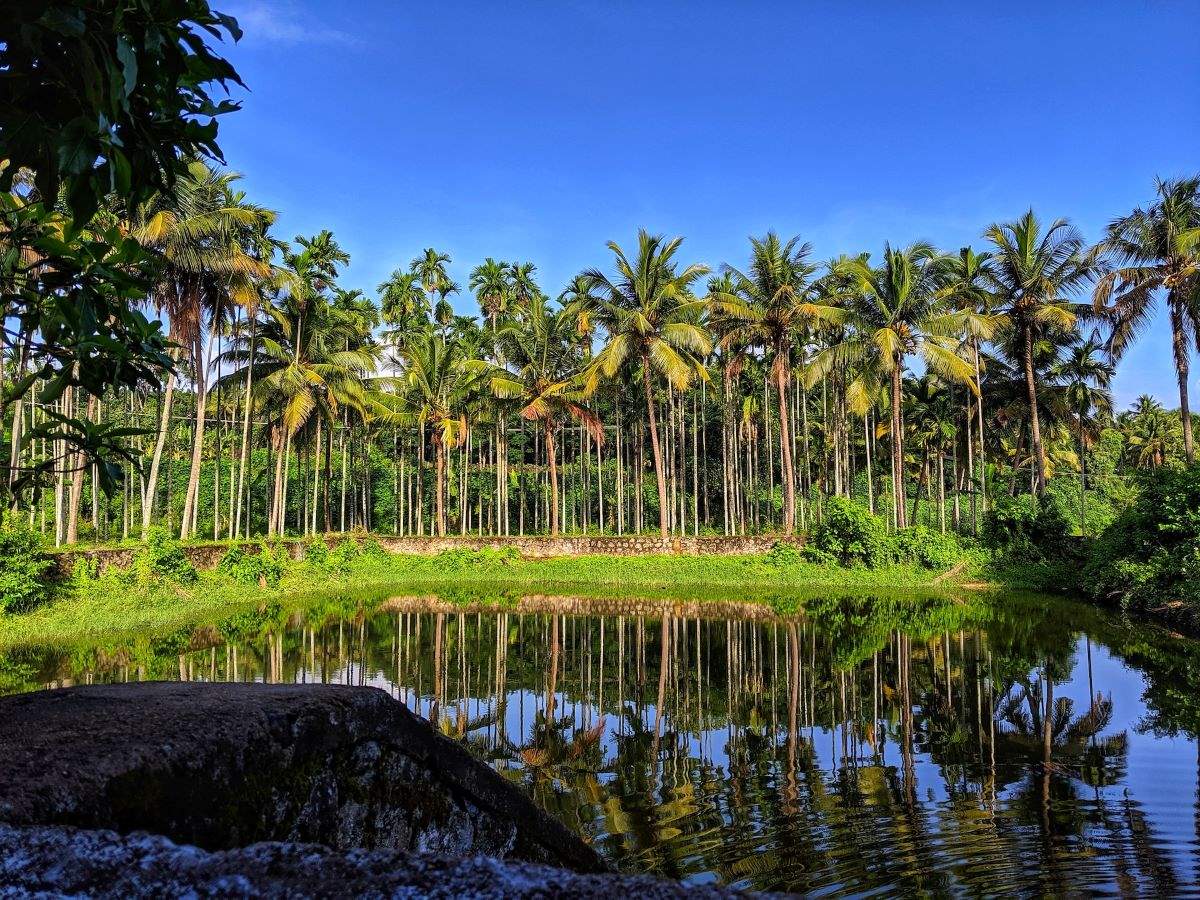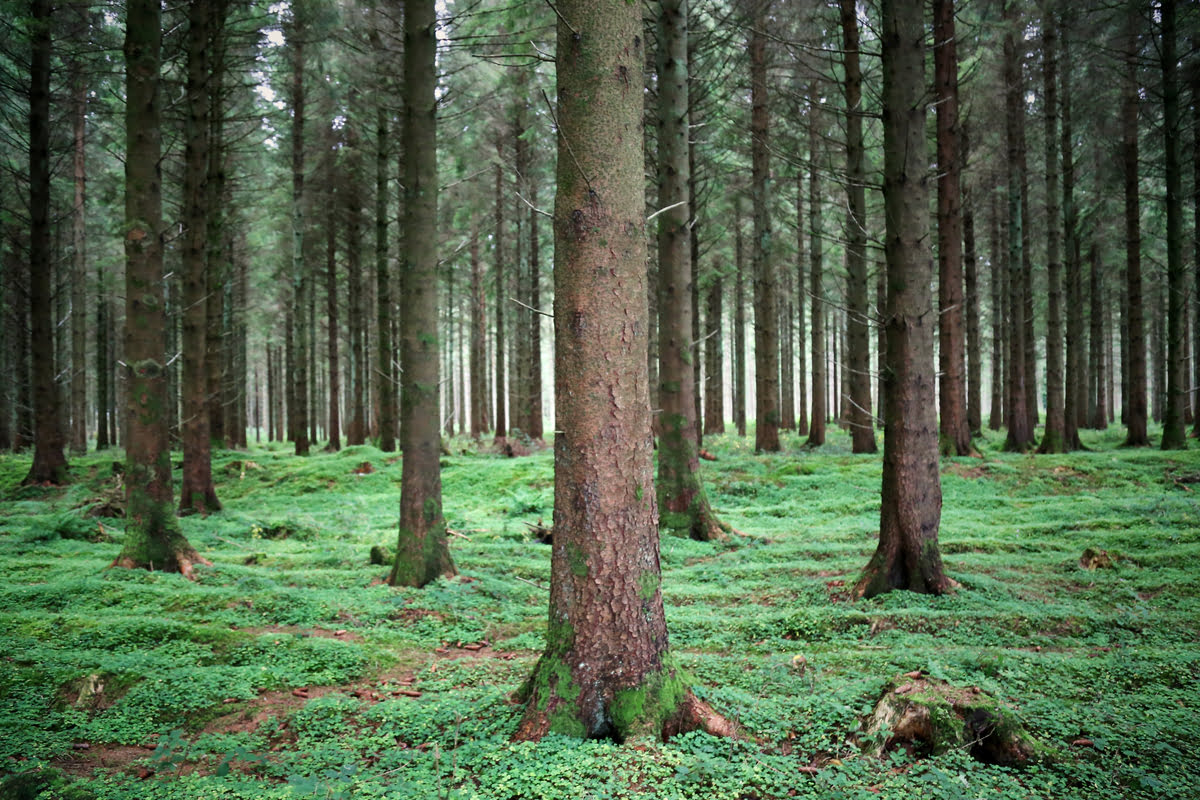Home>Types of Gardening>Edible Gardening>What Trees Does Chaga Grow On
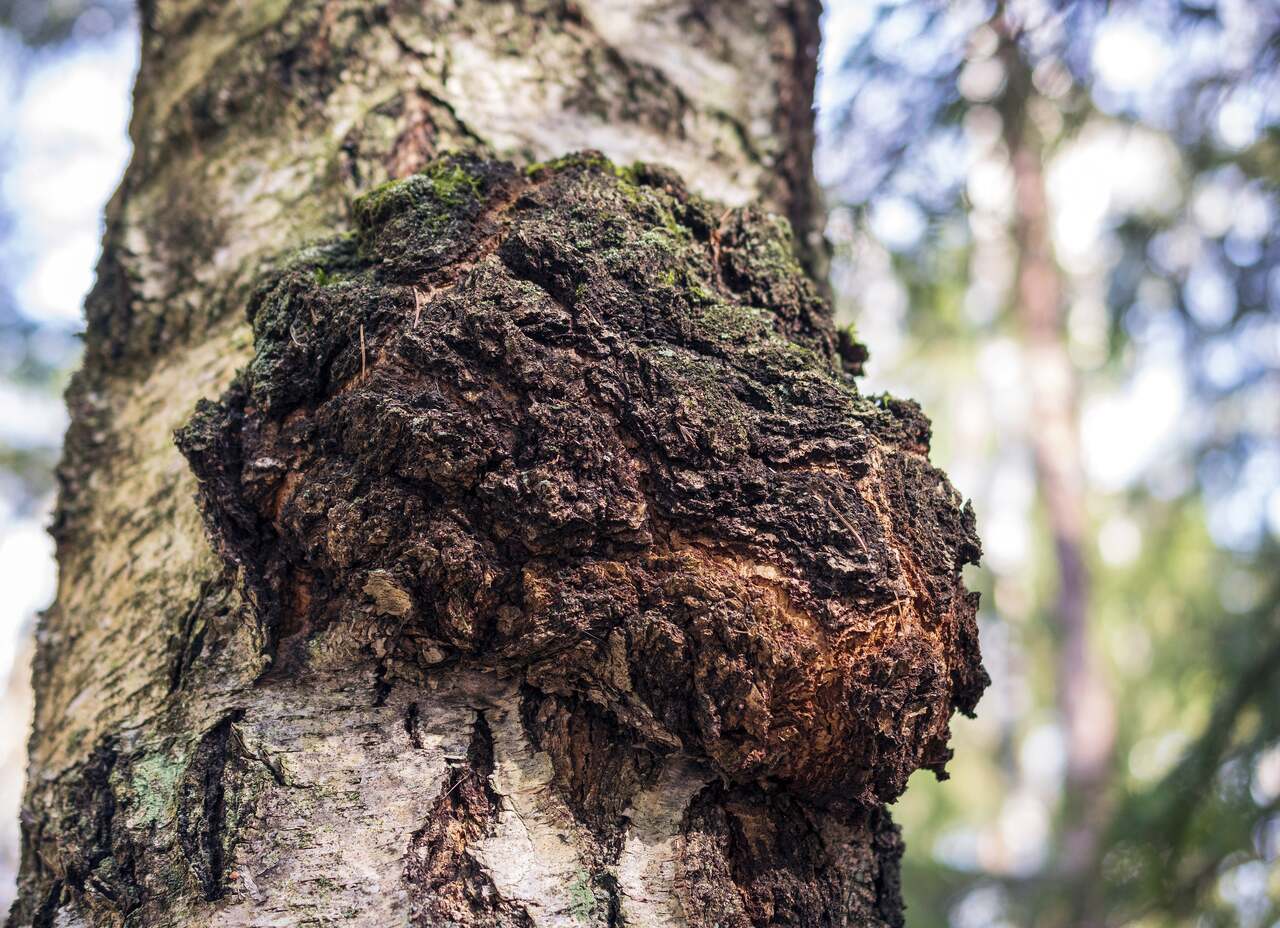

Edible Gardening
What Trees Does Chaga Grow On
Modified: January 22, 2024
Discover the fascinating world of Chaga and its relationship with edible gardening. Learn about the trees on which Chaga grows and how to incorporate it into your garden.
(Many of the links in this article redirect to a specific reviewed product. Your purchase of these products through affiliate links helps to generate commission for Chicagolandgardening.com, at no extra cost. Learn more)
Table of Contents
Introduction
Welcome to the fascinating world of chaga mushrooms! If you are interested in natural remedies and holistic health, then chaga mushrooms are something you should definitely know about. These unique fungi have a long history of traditional use and are renowned for their potential health benefits.
Chaga mushrooms, scientifically known as Inonotus obliquus, are a type of medicinal mushroom that grows on the bark of certain trees, primarily in cold climates. They have been used for centuries in traditional medicine practices, particularly in Russia, Siberia, and other parts of Northern Europe. However, chaga’s popularity has been steadily increasing worldwide as more people discover its potential therapeutic properties.
The chaga mushroom is characterized by its distinct appearance – a black, charcoal-like exterior covering a light brown, cork-like interior. Its unique texture and growth pattern make it easily distinguishable from other mushrooms. But it’s not just the appearance that makes chaga mushrooms special; it’s also the impressive array of bioactive compounds they contain.
Chaga mushrooms are known to be rich in antioxidants, such as triterpenoids and melanin. These antioxidants help protect the body against oxidative stress caused by harmful free radicals. Chaga also contains beta-glucans, which have been studied for their potential immunomodulating and anti-inflammatory effects.
Historically, chaga mushrooms have been used to support overall wellness and vitality. Traditional healers believed that chaga could help boost the immune system, improve digestion, promote healthy skin, and even increase energy levels. Modern research is beginning to uncover the potential benefits of chaga and validate some of these traditional claims.
Whether you are interested in chaga for its potential health benefits or simply want to learn more about this unique fungus, this article will provide you with valuable insights into the distribution of chaga and the trees it grows on. Understanding the relationship between chaga and its host trees is essential for anyone interested in foraging, cultivation, or using chaga mushrooms for their medicinal properties.
The Chaga Mushroom
The chaga mushroom, scientifically known as Inonotus obliquus, is a fascinating fungus with a long history of traditional use in various cultures. It is primarily found in cold regions, such as Russia, Siberia, and Northern Europe. Chaga mushrooms have gained significant attention in recent years due to their potential health benefits and unique composition.
When fully grown, chaga mushrooms have a distinctive appearance, resembling a piece of burnt charcoal. The outer layer is black and rough, while the inner layer is lighter in color and has a cork-like texture. This unique appearance makes chaga mushrooms easily recognizable in the wild.
One of the reasons chaga mushrooms have become so popular is their impressive array of bioactive compounds. These compounds include antioxidants, such as triterpenoids and melanin, which help protect the body against oxidative stress. Chaga also contains beta-glucans, which are known for their potential immune-boosting and anti-inflammatory properties.
Traditionally, chaga mushrooms have been used as a natural remedy to support overall wellness and vitality. They were believed to enhance the immune system, improve digestion, promote healthy skin, and increase energy levels. While more research is needed to validate these claims, preliminary studies have shown promising results.
Several scientific studies have suggested that chaga mushrooms may have anticancer properties. The antioxidants found in chaga can help neutralize free radicals that may contribute to the development of cancerous cells. Additionally, chaga mushrooms have been shown to boost the immune system, which plays a crucial role in preventing and fighting cancer.
Chaga mushrooms also have potential benefits for managing inflammation and oxidative stress, which are underlying factors in various chronic diseases. They may help reduce inflammation and protect against cellular damage caused by free radicals, offering potential relief for conditions such as arthritis, diabetes, and heart disease.
Furthermore, chaga mushrooms have been associated with improved cognitive function and mental well-being. Some compounds found in chaga have shown neuroprotective effects and may help prevent cognitive decline and support brain health.
As with any natural remedy, it is important to consult with a healthcare professional before using chaga mushrooms for medicinal purposes. While they are generally considered safe, some individuals may experience adverse reactions or interactions with certain medications.
In the next section, we will explore the distribution of chaga mushrooms and the trees they commonly grow on. Understanding the relationship between chaga and its host trees is vital for anyone interested in foraging, cultivating, or using chaga mushrooms.
Distribution of Chaga
Chaga mushrooms have a specific habitat and are primarily found in cold climates. They can be found in various regions around the world, with a significant concentration in Russia, Siberia, and Northern Europe. Chaga mushrooms typically grow in the boreal forests, which are characterized by their cold temperatures and rich biodiversity.
One of the key factors influencing the distribution of chaga is the availability of suitable host trees. Chaga mushrooms are parasitic, meaning they rely on living trees for their growth and survival. Specifically, they grow on the bark of certain tree species, forming symbiotic relationships with their hosts.
While chaga can potentially grow on different types of trees, certain species are more favorable for its development. The most common host tree for chaga mushrooms is the birch tree, particularly the white birch (Betula papyrifera) and the yellow birch (Betula alleghaniensis).
Other tree species that can serve as host trees for chaga mushrooms include the aspen, alder, and beech trees. These trees provide an ideal environment for chaga to thrive, typically in areas with high moisture and cool temperatures.
It’s important to note that the availability and abundance of chaga can vary within its distribution range. Factors such as the specific climate conditions, tree availability, and ecological factors in each region can influence the prevalence of chaga mushrooms.
In addition to the natural distribution of chaga, there are efforts to cultivate and grow chaga mushrooms in controlled environments. This allows for more consistent availability and quality of chaga for various purposes, including medicinal use and research.
Understanding the distribution of chaga and its preferred host trees is essential for those interested in foraging for wild chaga or cultivating it. It provides valuable knowledge on where to find chaga mushrooms and the specific habitats to focus on during the search.
In the next section, we will delve deeper into the host trees for chaga, particularly the birch trees, and understand why they are so significant in the growth and development of chaga mushrooms.
Host Trees for Chaga
When it comes to chaga mushrooms, the choice of host trees plays a crucial role in their growth and development. Chaga mushrooms primarily grow on the bark of specific tree species, forming symbiotic relationships with their hosts. The most common and preferred host trees for chaga are birch trees, particularly the white birch (Betula papyrifera) and the yellow birch (Betula alleghaniensis).
Birch trees provide the ideal habitat for chaga mushrooms due to their unique characteristics. Birch bark contains various compounds that are beneficial for the growth of chaga, such as betulin and betulinic acid. These compounds act as nutrients and create a favorable environment for the chaga to thrive.
White birch, also known as paper birch, is a popular host tree for chaga mushrooms. It can be easily identified by its distinctive white bark, which peels off in thin layers. The presence of chaga on white birch is often recognizable by the black, charcoal-like protrusions on the bark.
Yellow birch, on the other hand, has a smoother bark with a yellowish-brown hue. It is another preferred host tree for chaga mushrooms. Similar to white birch, the chaga growth on yellow birch appears as dark, irregular formations on the bark.
While birch trees are the primary host for chaga mushrooms, other tree species can also support their growth. These include the aspen, alder, and beech trees. However, the prevalence of chaga on these trees may be less common compared to birch trees.
The presence of chaga on a tree does not necessarily harm the tree itself. In fact, chaga can coexist with its host tree for many years, forming a symbiotic relationship. The chaga mushroom obtains nutrients from the tree and, in return, can potentially provide benefits to the tree through its bioactive compounds.
It’s important to note that not all birch trees will have chaga mushrooms growing on them. Even within areas where chaga is known to be present, it requires specific environmental conditions and certain factors for its growth to occur. Factors such as tree health, age, and stress levels, as well as climate conditions, can influence the likelihood of chaga growth on a particular tree.
Understanding the host trees for chaga is essential for those interested in foraging for wild chaga or cultivating it. By identifying and becoming familiar with the preferred trees, it becomes easier to locate chaga mushrooms in the wild and establish suitable environments for cultivation.
In the next section, we will conclude our exploration of chaga mushrooms and highlight the key insights gained about their distribution and host trees.
Birch Trees
Birch trees play a significant role in the growth and development of chaga mushrooms. These trees, particularly the white birch (Betula papyrifera) and the yellow birch (Betula alleghaniensis), are the preferred host trees for chaga. They provide the ideal environment for chaga mushrooms to flourish.
White birch, also known as paper birch, is well-known for its distinctive white bark that peels off in thin layers. This species is highly favored by chaga mushrooms. The chaga growth on white birch can be easily spotted as black, charcoal-like protrusions on the bark.
Yellow birch, with its smooth bark and yellowish-brown color, is another popular host tree for chaga mushrooms. Similar to white birch, the presence of chaga on yellow birch is characterized by dark, irregular formations on the bark.
Birch trees provide an optimal habitat for chaga mushrooms due to the unique compounds present in their bark. One of these compounds is betulin, which is obtained from the outer bark of birch trees. Chaga mushrooms have the ability to convert betulin into another compound called betulinic acid, which holds potential anticancer properties.
In addition to betulin, birch bark also contains other bioactive compounds that facilitate the growth of chaga mushrooms. These compounds provide nourishment to the chaga and create a supportive environment for its development.
It’s worth noting that not all birch trees will have chaga mushrooms growing on them. Various factors affect the likelihood of chaga growth, including the health and age of the tree, as well as the surrounding environmental conditions. Chaga tends to thrive on older birch trees that may have experienced stress or injury.
Birch trees are not negatively impacted by the presence of chaga mushrooms. In fact, the chaga and the tree can coexist in a symbiotic relationship. The chaga obtains nutrients from the tree while potentially providing benefits back, such as protection against harmful pathogens and pests.
For those interested in foraging for wild chaga or cultivating it, understanding the role of birch trees is crucial. By identifying white birch and yellow birch trees in the wild, it becomes easier to locate areas where chaga mushrooms may be present.
Next, we will explore other tree species that can serve as host trees for chaga mushrooms, expanding the possibilities for finding this intriguing fungus.
Other Tree Species
While birch trees, particularly white birch and yellow birch, are the primary host trees for chaga mushrooms, there are other tree species that can also support its growth. Although less common, these tree species provide alternative habitats for chaga mushrooms to thrive.
One such tree species is the aspen tree (Populus tremula). Aspens are deciduous trees known for their smooth, grayish-white bark. They can be found in various regions and provide suitable conditions for chaga growth. Although chaga mushrooms on aspen trees might not be as abundant as on birch trees, they can still be found in certain areas.
Alder trees (Alnus spp.) are another type of tree that can serve as a host for chaga mushrooms. Alders are fast-growing trees with dark gray bark and serrated leaves. They are often found near wetlands and provide a moist environment that chaga mushrooms favor. While not as commonly associated with chaga as birch trees, alders can still harbor chaga growth in certain regions.
Beech trees (Fagus spp.) are also known to support chaga growth, although to a lesser extent compared to birch trees. Beech trees have smooth bark and are often recognized by their distinctive, oval-shaped leaves. Chaga mushrooms can occasionally be found on beech trees, particularly in areas where birch trees are less prevalent.
It is important to note that the prevalence of chaga mushrooms on these alternative host trees may vary depending on the specific geographic location and environmental conditions. Chaga growth tends to be more abundant on birch trees, while the presence on other tree species may be less common.
Exploring different tree species for chaga mushrooms can be an exciting and rewarding endeavor for those interested in foraging or cultivating chaga. It expands the possibilities of finding this unique fungus and offers a diverse range of environments to explore.
Remember, when foraging for chaga mushrooms, it is essential to positively identify both the tree species and the chaga itself to ensure safety and authenticity.
In the following section, we will conclude our exploration of chaga mushrooms and summarize the key insights gained about their distribution and host trees.
Conclusion
In conclusion, chaga mushrooms are fascinating fungi with potential health benefits and a long history of traditional use. They are primarily found in cold regions, such as Russia, Siberia, and Northern Europe, where they grow on the bark of specific tree species.
Birch trees, particularly white birch and yellow birch, are the most common and preferred host trees for chaga mushrooms. These trees provide the ideal environment for chaga to thrive, thanks to the unique compounds present in their bark. White birch, with its distinctive white bark, and yellow birch, with its smooth yellowish-brown bark, are easily recognizable and serve as reliable indicators of potential chaga growth.
While birch trees are the main hosts for chaga mushrooms, other tree species such as aspen, alder, and beech can also support their growth, although to a lesser extent. These alternative host trees expand the possibilities for those seeking to find chaga in the wild.
Understanding the distribution of chaga and its preferred host trees is crucial for anyone interested in foraging for wild chaga or cultivating it. It helps locate potential chaga growth areas, increases the chances of successful chaga identification, and ensures a sustainable approach to harvesting.
As with any natural remedy, it is important to exercise caution and consult with a healthcare professional before using chaga mushrooms for medicinal purposes. While chaga is generally considered safe, individual reactions and interactions with medications may vary.
Whether you are intrigued by the potential health benefits, want to explore the world of foraging, or are interested in cultivating chaga mushrooms, the knowledge gained about their distribution and host trees serves as a valuable foundation for your journey.
So, go forth and immerse yourself in the world of chaga mushrooms – discover their unique beauty, explore their potential benefits, and embrace the wealth of knowledge that edible gardening has to offer.
